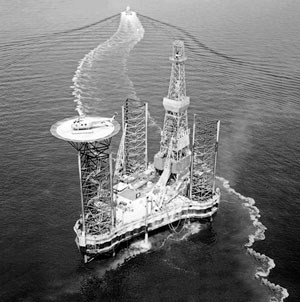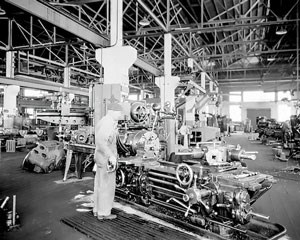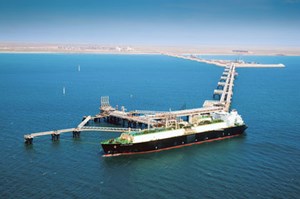100 years of fueling the world’s growth

The last 100 years have witnessed economic progress that has lifted billions of people into the global middle class. Greater access to affordable and secure energy has been among the most powerful catalysts raising global living standards during this time period.
Like many of our peers, Chevron can trace its lineage to a group of early wildcatters, whose success paved the way for the establishment of the Pacific Coast Oil Company on Sept. 10, 1879.
Since then, our company has continued to evolve—our name has changed more than once—but, we’ve always retained our founders’ spirit, grit, ingenuity and perseverance. Our success is driven by our people and their commitment to getting results the right way, operating responsibly, applying new technologies, and capturing opportunities for profitable growth.
Technology has always been a key to the industry’s success, enabling us to reinvent ourselves many times over, Fig. 1. The wildcatters who founded the industry could not have imagined the offshore drilling rigs of today, guided by satellites and seismic mapping of geologic formations, tens of thousands of feet below the ocean’s surface. Refineries, likewise, have evolved well beyond what their earliest designers could have imagined.

Refinery and shipping innovation. Take, for instance, Chevron’s refinery in Richmond, Calif.: Built on a peninsula of low hills rising from San Francisco Bay, the refinery became the West Coast’s largest, most advanced plant upon its completion in July 1902. A complex of red brick buildings, the new plant contained 19 stills that could process 10,000 bopd in its first year of operation, Fig. 2. Today, the Richmond Refinery processes about 250,000 bopd, supported by thousands of technology systems. What’s more, evolution continues, as we prepare to further modernize the facility by replacing older equipment to create a newer, safer and cleaner Richmond Refinery.
And the midstream segment of the oil and gas business has witnessed similar innovation over the decades. Today, pipelines interconnect nations, traverse mountain ranges, and connect offshore production facilities to onshore markets through water depths and pressures unfathomable to our industry’s pioneers. Shipping has enabled oil, and more recently natural gas, to be a truly global, fungible product. Since building our first tanker in 1895, Chevron’s Shipping Company has evolved from a fleet largely plying coastal waters, to supertankers connecting supply and consumers separated by oceans and continents.
Natural gas pioneer. As in the past, today’s global economy depends on affordable, reliable energy to drive economic development, and provide the goods and services that the world needs. The U.S. Energy Information Administration projects that global energy demand will continue to grow, as incomes rise and the middle class grows. A major portion of that growth will come from natural gas—much of it delivered to market as liquefied natural gas (LNG).

Chevron has been in the natural gas business for more than 100 years, and is already a leading global supplier with resources on six continents. With projects like Gorgon and Wheatstone in Australia, along with our existing equity shares at Angola LNG and the Northwest Shelf, we are positioned to be one of the world’s top 10 LNG suppliers.
Our Gorgon project (Fig. 3) is one of the largest natural gas developments ever undertaken, and the largest single-resource development in Australia’s history. The project includes the design, construction and operation of facilities to inject and store CO2 into a deep reservoir more than 2 km beneath the Earth’s surface. It is expected that 100 MMt of CO2 will be injected into the reservoir over the life of the Gorgon Project. This will reduce greenhouse gas emissions from the project by approximately 40%—in one of the world’s largest-ever carbon capture and sequestration projects—a challenge that our industry forefathers could not have foreseen.
But no one company can do it alone. Meeting global energy demand will require a collective effort among buyers, sellers, contractors, governments, local communities, and workers to enable the development of sufficient megaprojects to bring these supplies to market.
Time, technology and persistence. And while the shale revolution has surely changed the industry in ways that no one expected, the era of the megaproject in our industry has not passed. But these projects require time, technology and, above all, persistence. In 2006, Chevron’s Jack well test in the U.S. Gulf of Mexico set more than a half-dozen world records for pressure, depth and duration in deep water. At a water depth of one mile, and with a well reaching another 4 mi, Jack was the deepest well ever tested in the Gulf. Between discovery and first oil, the project set several industry firsts, applied new technologies that did not exist when the project started, and amassed game-changing learnings that are transferable to other projects across our global operations. When Jack/St. Malo began production in 2014, Chevron had achieved something never done before. By extending existing technologies and developing new ones, we proved that the industry could operate in ever-deeper water, deal with higher pressures, and address the many challenges that we all confront.
Over the course of 100 years of industry success, it also must be acknowledged that there have been instances when technology, systems, process and people have proven fallible. The industry, as a whole, must continually emphasize safe operations and environmental responsibility as an integral component of all our work.
Everywhere we operate, we strive to build lasting relationships to create prosperity and successful outcomes for all stakeholders. We demonstrate our commitment to the countries and communities where we operate by creating jobs, developing and employing local workforces and, where possible, sourcing from local suppliers. Over the past 10 years, alone, we have made approximately $1.9 billion in social investments in local communities in three core areas: health, education, and economic development. In 2015, we advanced our strategic programs and partnerships with more than $233 million in such social investments.
In an increasingly interconnected world, energy remains at the heart of human progress. The challenges facing our industry will continue to grow, as we push the boundaries of technology and operate in an environment of rising expectations. The last 100 years have set the bar for the industry. We must continue to evolve, innovate and persevere, to meet the energy needs of this century and enable billions more people to enjoy improved standards of living and the benefits of global economic growth. Chevron will continue looking for new partnerships to do our part to keep the world on a pathway to prosperity. ![]()
Chevron: A brief history
Explorers Demetrius Scofield and Frederick Taylor of the California Star Oil Works, a Chevron predecessor, took aim in the 1870s at Pico Canyon, a remote portion of the rugged Santa Susana Mountains. In September 1876, driller Alex Mentry struck oil in Pico No. 4. The well was California’s first successful oil well, and it launched the state as an oil-producing region.
Lacking the capital it would need to seize marketing opportunities in this growing area, California Star was acquired by the Pacific Coast Oil Co. on Sept. 10, 1879. However, by 1900, Standard Oil Co. (Iowa) controlled 96.5% of the Western market in light oils.
In 1900, Pacific Coast Oil agreed to be acquired by the Standard Oil conglomerate, but was able to retain its name. Then, in 1906, a consolidation between Pacific Coast Oil and Iowa Standard created a new entity, Standard Oil Co. (California).
A May 1911 Supreme Court decision separated Standard Oil Co. (California) from its giant, New York-based parent. In 1926, Standard boosted its production capacity by almost 50%, when it acquired Pacific Oil Co. The company then created a new corporate structure with a new name—Standard Oil Co. of California, or Socal.
The company has since gone through a series of mergers, acquisitions and name changes while expanding its holdings. In 1984, Socal changed its name to Chevron Corporation and acquired Gulf Oil Corporation. Then, in 2000, the company merged with Texaco to form ChevronTexaco. The name was changed back to Chevron Corporation in 2005, and Unocal was acquired that same year. ![]()
- Applying ultra-deep LWD resistivity technology successfully in a SAGD operation (May 2019)
- Adoption of wireless intelligent completions advances (May 2019)
- Majors double down as takeaway crunch eases (April 2019)
- What’s new in well logging and formation evaluation (April 2019)
- Qualification of a 20,000-psi subsea BOP: A collaborative approach (February 2019)
- ConocoPhillips’ Greg Leveille sees rapid trajectory of technical advancement continuing (February 2019)


